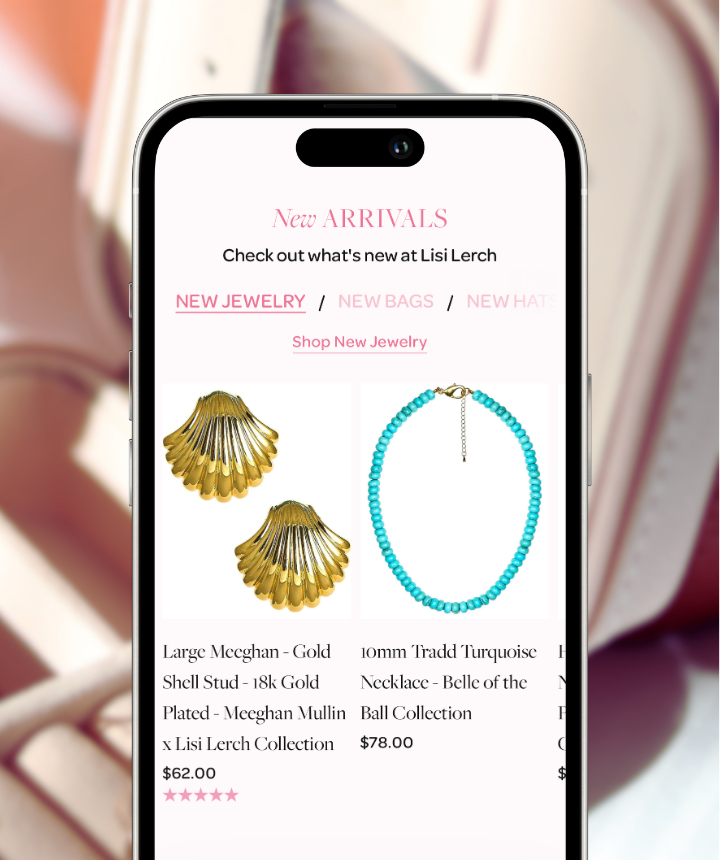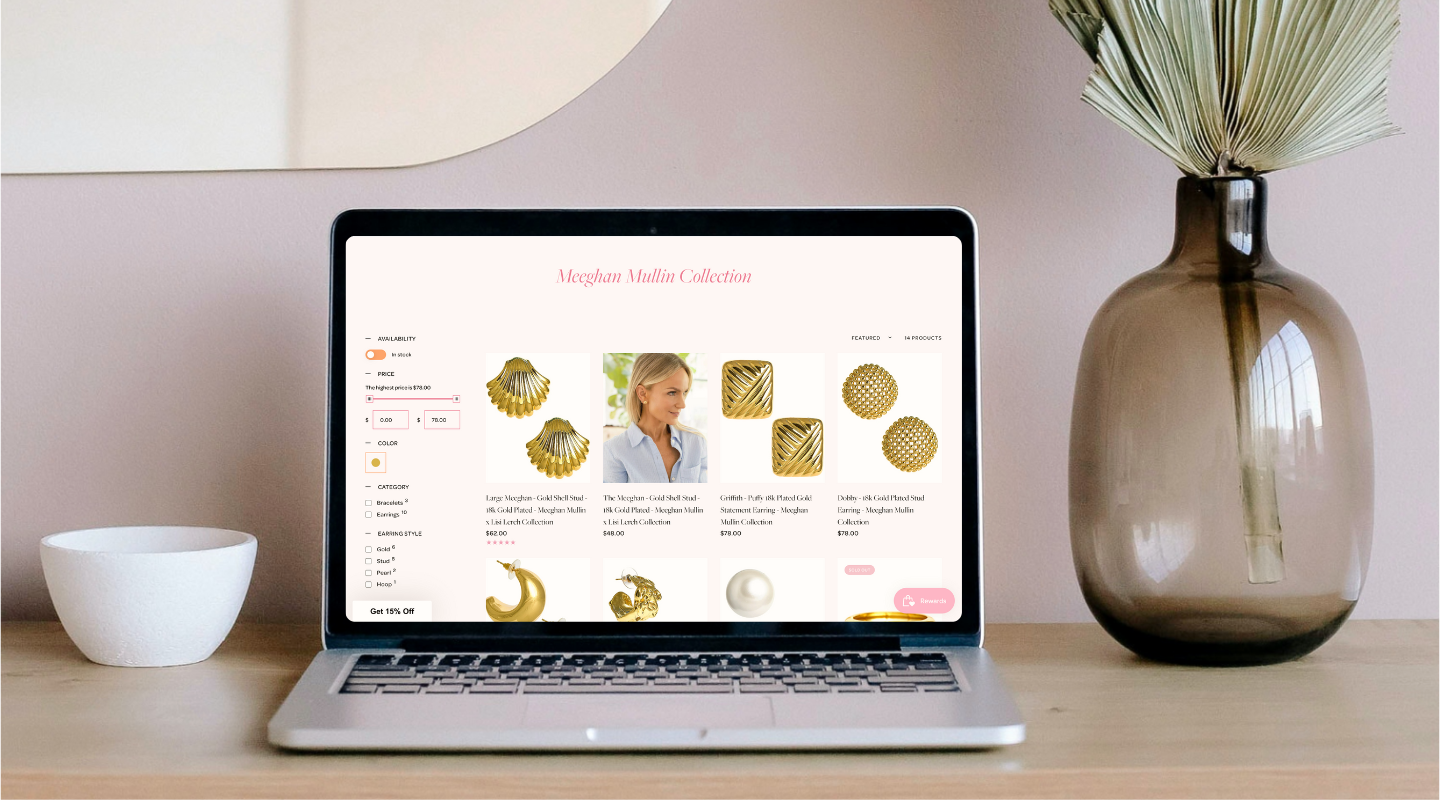Lisi Lerch
Elegance, Whimsy, and Charm
Lisi Lerch is a women-led accessories brand based in Villanova, Pennsylvania known for its whimsical, resort-inspired style and customizable handbags. With a mission to bring joy and elegance to every occasion, they design jewelry, hats, and bags that blend classic charm with a playful spirit. Their audience spans generations of stylish women who crave standout pieces and effortless customization.
Shopify Plus | Store Migration | Web Design and Development |
Shopify Plus | Store Migration | Web Design and Development |
The Problem
Lisi Lerch, a vibrant women-led accessories brand, had outgrown its BigCommerce setup. Despite driving 2,500+ daily visitors through a mix of paid and organic traffic, the site’s conversion rate plateaued at ~1%. A single storefront was being used for both B2C and B2B operations, which limited the team’s ability to analyze sales channel performance or tailor experiences. Additionally, poor navigation and limited filtering made it difficult for shoppers to discover the brand’s wide range of customizable, colorful accessories.
Customer Insights: Lisi Lerch’s two core personas
Jane Calhoun (B2C): A stylish, socially active woman (35–55) who shops frequently for events, vacations, and gifts. She follows mid-tier fashion influencers on Instagram and TikTok, values quality, and enjoys bold, colorful fashion statements.
Elizabeth Gentry (B2B): A boutique owner in the eastern U.S. who regularly buys at markets like Atlanta Apparel and Dallas Market. She’s looking for a digital wholesale solution that offers streamlined ordering, record-keeping, and responsive customer service, without sacrificing the personalized brand experience.
Hypothesis and Strategy
We hypothesized that migrating to Shopify Plus and splitting B2C and B2B into separate storefronts would streamline operations, improve conversion, and unlock better channel-level data. From a UX perspective, we believed that redesigning navigation around product type, occasion, design style, and influencer collaborations would drive deeper engagement and higher cart adds. Shopify’s native checkout and ecosystem of apps offered the flexibility to execute these strategies hollistically.
Prioritization
Rather than customizing a single Shopify store for both audiences, we opted to migrate BigCommerce data into two entirely separate Shopify stores. This decision allowed us to give B2C and B2B customers distinct experiences, pricing, shipping, and messaging—while enabling the Lisi Lerch team to apply data-backed strategies uniquely suited to each channel.
Solution Design
We designed two store fronts with separate key features to facilitate both the B2C and B2B customer journeys.
-
Enhanced filtering by product type, occasion, design style, and influencer collabs
Loyalty program to improve customer lifetime value
Product reviews to boost social proof
Full integration with Meta, Google Shopping, and affiliate marketing tools
Email marketing automation with segmentation
-
Login-gated access
Tiered wholesale pricing and catalogs
Custom payment terms and shipping rules
Wholesale application form and account management
Success Metrics and Measurement Plan
Conversion rate changes (B2C and B2B):
Is the store more effective in driving sales to completion?
Bounce rate:
Can visitors easily navigate to another page?
Page views per session:
How engaging and navigable is the website?
Execution and Stakeholder Alignment
This was a 12-week project with weekly stakeholder check-ins to align visual direction, app strategy, and GTM planning. We held design reviews at key milestones—first draft, second draft, and final approval. As part of offboarding, we delivered admin training, backend documentation, and 30 days of post-launch support to ensure operational continuity and platform confidence.
Results and Learning
Within the first 90 days post-launch, the B2C store’s conversion rate increased by 17%. The brand now has clearer sales attribution, distinct buyer journeys, and scalable infrastructure to support future growth.
If I were to optimize further, I’d recommend layered A/B testing for hero layouts, category filters, and product discovery elements to iteratively improve performance across both storefronts.
Ready to elevate your business?
Let’s chat about how we can build your website to grow and scale your thriving business.











